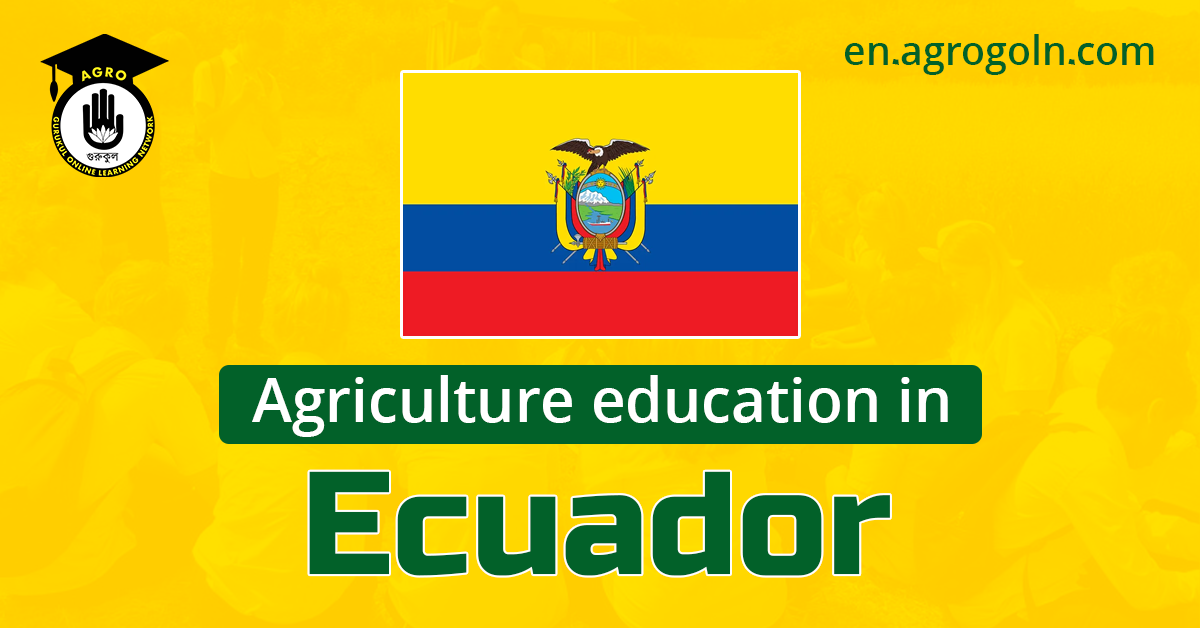Agricultural education, as an essential tool to promote sustainable development and eradicate hunger, plays a pivotal role in many countries, including Ecuador. This South American nation, with its diverse climate zones and agricultural potential, considers agricultural education a linchpin to its economic and developmental strategies.
1. Background
Ecuador, situated along the equator, boasts a range of ecological regions from coastal lowlands to high-altitude Andean regions and the Amazonian rainforest. This varied topography has given rise to diverse farming practices, making agricultural knowledge both essential and context-dependent. Historically, indigenous communities have maintained a deep understanding of local ecosystems, but modern challenges demand a fusion of traditional knowledge with contemporary agricultural science.
2. Evolution of Agricultural Education in Ecuador
The inception of formal agricultural education in Ecuador can be traced back to the early 20th century, mainly influenced by the Green Revolution that focused on increasing agricultural production through modern techniques and technologies. Early institutions focused on teaching Western farming methods, often disregarding local knowledge and practices.
However, in recent decades, there has been a paradigm shift towards holistic and integrated approaches, which blend indigenous knowledge with scientific research. This recognizes the importance of biodiversity, sustainability, and the socio-economic aspects of farming in Ecuador.
3. Formal Agricultural Education
a. Secondary Level
In Ecuador, agricultural education starts at the secondary level. Rural schools often incorporate agricultural subjects into their curricula, providing students with basic knowledge about crop production, livestock management, and agricultural technologies. Some specialized agricultural high schools or ‘agropecuarias’ provide more comprehensive training in agricultural sciences.
b. Tertiary Level
Tertiary agricultural education in Ecuador is offered through various universities and technical institutes. Notable institutions include:
- Central University of Ecuador (UCE): UCE’s Faculty of Agricultural Sciences is among the oldest in the country and offers programs in agronomy, agricultural economics, and animal science.
- National University of Loja (UNL): Located in southern Ecuador, UNL has been pivotal in promoting sustainable agriculture, especially in the region’s coffee-producing sectors.
These universities emphasize research, promoting innovation, and developing solutions tailored to Ecuador’s unique challenges.
c. Postgraduate and Specialized Training
Various institutions offer postgraduate programs, workshops, and specialized training sessions for professionals. These are geared towards specific challenges, such as adapting to climate change, sustainable farming, or organic agriculture.
4. Non-Formal Agricultural Education
A significant portion of Ecuador’s farming community does not have access to formal education. Thus, non-formal educational initiatives play a crucial role. Non-governmental organizations (NGOs), international agencies, and local community groups often organize training sessions and workshops for farmers. Topics can range from organic farming practices to the use of technology in agriculture.
5. Integrating Indigenous Knowledge
Indigenous communities in Ecuador have practiced sustainable agriculture for centuries, understanding local ecosystems intricately. Recognizing the richness of this knowledge, there’s a conscious effort to integrate indigenous practices into the formal education system. This has led to unique courses and programs that teach students about ancestral farming techniques, permaculture, and the philosophical underpinnings of indigenous agriculture.
6. Challenges Faced by Agricultural Education in Ecuador
- Resource Constraints: Many agricultural schools, especially in rural areas, face a lack of resources. This ranges from basic infrastructure to updated teaching materials and trained educators.
- Modernization vs. Tradition: Balancing modern agricultural practices with traditional methods is a nuanced challenge. Overemphasis on either side could lead to loss of biodiversity or economic uncompetitiveness.
- Relevance: Ensuring that the agricultural education remains relevant to the local context is vital. For instance, teaching rice cultivation techniques in the high Andes would be impractical.
7. The Way Forward
For agricultural education in Ecuador to remain effective, a multi-pronged approach is necessary:
- Collaboration: Building partnerships between universities, NGOs, governmental bodies, and indigenous communities can lead to a more holistic agricultural education system.
- Research and Development: Investing in R&D will ensure that Ecuador remains at the forefront of agricultural innovation, tailored to its unique needs.
- Emphasis on Sustainability: With global challenges like climate change, it’s essential that agricultural education emphasizes sustainable practices, ensuring long-term viability.
- Technological Integration: Introducing students to technologies like GIS, drones, and other modern tools can revolutionize farming practices.
In conclusion, agricultural education in Ecuador is a dynamic blend of tradition and modernity. As the country faces the challenges of the 21st century, a robust, relevant, and integrated agricultural education system will be pivotal to its success. Recognizing the value of both traditional and modern knowledge will ensure that Ecuadorian agriculture remains sustainable, productive, and beneficial to its diverse population.
